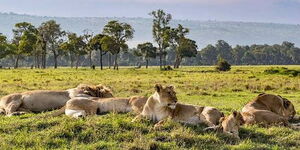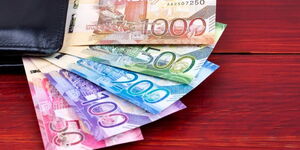Shortage in the food supply has been experienced in various parts of the country following the outbreak of the Covid-19 virus in Kenya.
After President Uhuru declared a nationwide curfew on Wednesday, March 25, 2020, traders and residents of urban settlements have decried the reduction of food in markets resulting from the fear and panic brought about by the virus, and the restrictions on movement.
A trader in Nairobi who spoke to Kenyans.co.ke informed that as talks of a lockdown continue to surface, various items are getting scarce by the day. Jared Nyamari, who runs a grocery in Kangemi, stated that supply had reduced, resulting from fears of contracting the virus.
"You know, as time goes by the supply has kept declining, I don't know if it is because the transporters are afraid of the virus or what?
"Last week I spoke to a relative upcountry and he told me there were a lot of vegetables in the farms, onions, but they are just lying there," Nyamari stated.
With an impending lockdown, and vegetables and fruits getting scarce, Kenyans.co.ke sought to compile and inform on ways in which households could preserve food through the period as guided by the Food and Agriculture Organisation (FAO).
This is because a majority of the vegetables are seasonal and perishable. After a short while, they tend to lose their colour, taste, nutrients not long after they are harvested.
Solar Drying
Vegetables and fruits should first be thoroughly cleaned before they can be preserved.
In this process, a simple homemade solar dry is made of wood, covered with black plastic material for the purpose of absorbing sunlight that in turn dries the vegetables and sliced fruits.
The process also results in cutting back on the weight of the produce, which makes storage and transportation easier.
Sun Drying
Sun drying is another efficient method of food preservation and like solar drying, requires the produce to be washed thoroughly and chopped into smaller pieces. They are then boiled for about five minutes before they are put out to dry. This is mainly to ensure they keep their colour even after they are dried.
It is advisable that one use a dark surface, or rather black plastic/canvas material in drying the produce. The foods should be subjected to the sun until they are fully dried and crunchy.
For fruits, Victor Marangu, a nutrition officer who worked with USAID in Tharaka constituency in an interview with Daily Nation revealed, that they are cleaned properly, sliced then immersed in warm water with an antibrowning agent for some time, after which they are dried.
One is advised to cover or keep the food away from a place prone to insects and birds.
Marangu stated that this way, the fruits have a shelf life of up to six months and should be kept in an airtight plastic bag.
the weather conditions, the size of the produce, the thickness, turning intervals and initial moisture content of the foods determines or at least plays an important role in the preservation process.
Blanching
This is a process whereby produce is drenched in boiling steamy water and subsequently followed up by immersing it in cold running water.
The method plays a role in halting the enzymatic actions in the plants, therefore prevents the loss of colour, taste, nutrients.
It is advised that if vegetables are dried before they are blanched or their conditions maintained, they will rot or will lose nutrients. Once they are blanched, they are to be dried away from direct sunlight, packed and stored in a cool dry place.












